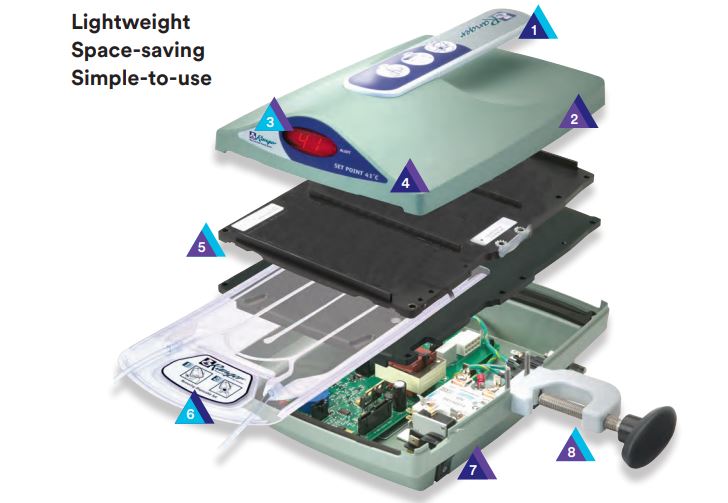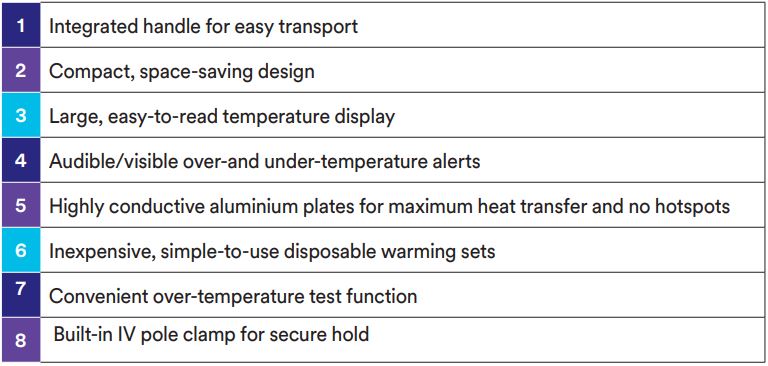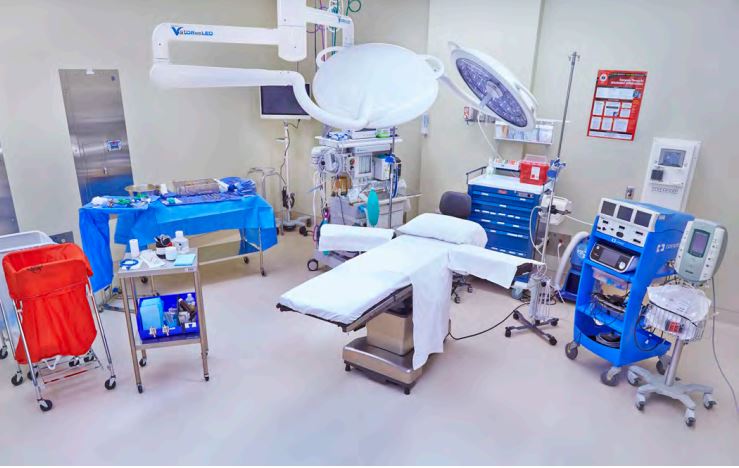3M™ Ranger™ blood & fluid warming systems: Smart, intuitive dry heat technology solution
Make your job easier with no hassle blood and fluid warming.
A flexible solution
The Ranger™ blood and fluid warming system uses dry heat technology to help make your job easier and optimize patient care. Dry heat technology adapts to virtually any fluid warming need from KVO (keep vein open) to 500 mL/min or 30 L/hour. That means fast, accurate heat control which minimizes the risk of overheating fluids while avoiding the potential for cross contamination associated with traditional water bath systems.1
Safe and secure
One of our latest innovations, the redesigned 3M™ Ranger™ pressure infusor has important safety features that are a part of the re-design, including visual and audible alerts to let you know if a chamber’s pressure drops below or exceeds the desired pressure range. By applying 300 mmHg of consistent, controlled pressure to IV fluid bags, the Ranger pressure infusor provides secure and simple administration of fluids to a flow rate up to 500 mL/ min. Two independent chambers accommodate a variety of fluid bag sizes, from 250 mL to 1000 mL.
Save time and money
To save time and money in training and system maintenance, just one warming unit is used for all flow rates – from pediatric cases to standard flow rates
to high volume flow rates – all cases follow the same setup process. Disposable warming sets slide easily into the warming unit and only fit in one direction, so setup is intuitive.
Because the Ranger system uses dry heat technology, there are no unsightly water reservoirs to change and maintenance is easy. One simple tool is all that’s required to clean the Ranger warming unit in a matter of minutes.
Clinically proven
It can be so important to warm your surgical patients’ fluid or blood. Infusing cold fluids can produce hypothermia.2 In fact, infusing one liter of room temperature fluid (21°C) or one unit of refrigerated blood (4°C) can decrease the patient’s mean body temperature by 0.25°C2 and the effects are additive.
So the higher the infusion volume, the more drastic the drop in mean body temperature.2
In contrast, fluid warming can minimize heat loss when large amounts of fluid or blood are needed. It is not a stand-alone option for patient warming (or normothermia maintenance), but it may offer a benefit when used with other patient warming modalities.
Sustainability
In the Health Care Business, 3M is working to make our manufacturing processes and internal operations more sustainable. We took it one step further and worked with suppliers to rid the entire warming set of components that are made of materials that contain DEHP (di-[2-ethylhexy] phthalate).
Inspired Design


Eliminate a potential source of water-related infection with advanced dry heat technology.

You and your staff work hard to remove potential sources of nosocomial pathogens and healthcare associated infections. Warm water has long been identified as a potential source of gram-negative bacilli.1 Endocarditis, bacteremia and peritonitis with Pseudomonas or Acinetobacter have also been traced to contaminated 37°C waterbaths.1
Dry heat fluid warming devices like the 3M™ Ranger™ blood/fluid warming system uses aluminum plates within the warming unit. No water bath. No risk of potential water-related infection due to a warm water bath.
The revolutionary design and aluminum plates in the Ranger blood/fluid warming system are ideally spaced to create maximum contact area with the warming set while allowing unrestricted fluid flow. The tightly coupled heat system is highly responsive to changes in flow rates under all fluid warming conditions. A microprocessor based controller monitors the system temperature four times per second and is sensitive to variations as small as 0.1°C. This allows the warming unit to either increase or decrease heat as fluid temperature and flow rates change.

